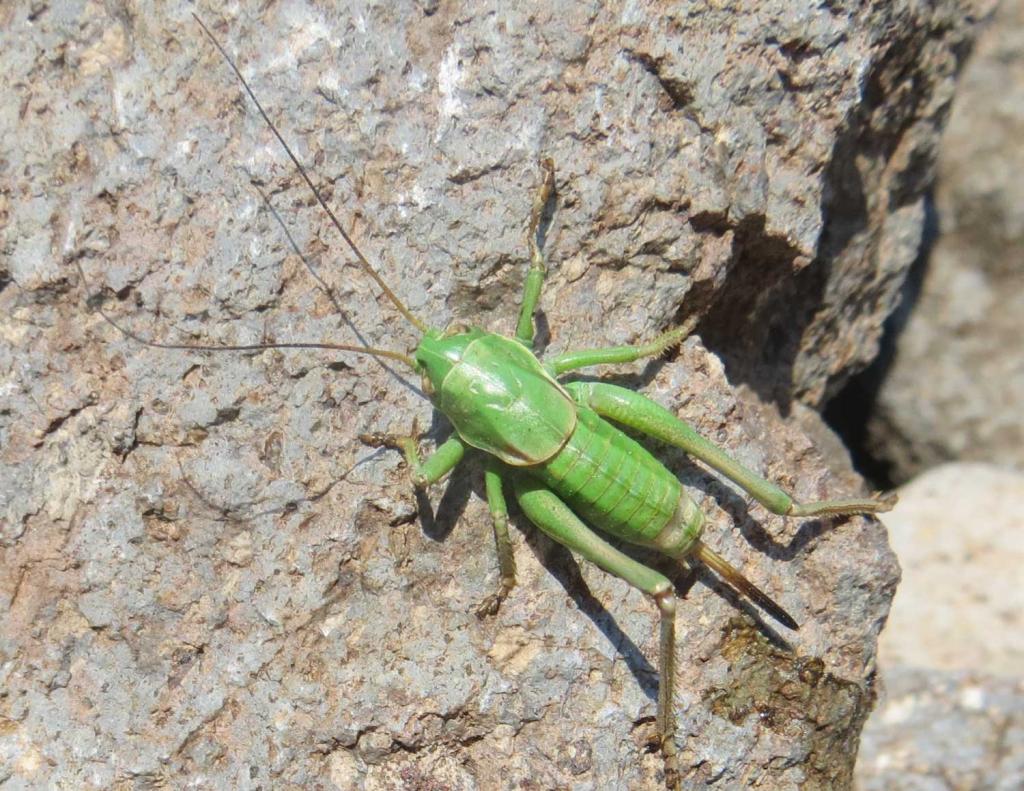 You may have heard of a little critter called a Mormon Cricket.
You may have heard of a little critter called a Mormon Cricket.
While LDS Church president Russell M Nelson has asked that members of the church stop referring to themselves as Mormons (instead opting for the much more wordy “member of The Church of Jesus Christ of Latter-day Saints”), insects don’t seem to pay much attention to what people tell them to do, regardless of their position. So, “Mormon Cricket” it remains.
I’m going to tell you the story of how this insect got its name, from an event that happened nearly 200 years ago as Latter-day Saints found their way to the West during the famous pioneer migration of 1847.
Crickets, Seagulls, and Mormon Pioneers
The Mormon pioneers who migrated to Utah in 1847 soon found themselves desperate for food as they settled into their new home. Food shortages from various misfortunes, including having just made an unplanned trip over more than a thousand miles from Illinois to the Salt Lake Valley, made that first winter difficult. These settlers desperately needed to have an abundant crop the following spring.
After planting their crops and eagerly anticipating a plentiful harvest, these first Mormon pioneers were met with yet another major setback. A species of “cricket” (the bug is actually in the katydid family) now classified as Anabrus simplex found conditions in the pioneers’ new home perfect for swarming. The pioneers watched in horror and attempted without success to push back the pests, with the situation becoming dire enough that many of the settlers considered leaving Utah for California or Oregon, where they might have better opportunities to grow food upon which to live and become self-reliant.
What came next was considered by the early Mormons to be a miraculous rescue. An event now known as the “Miracle of the Seagulls” saw legions of seagulls mysteriously appear in early June, 1848 and dutifully get to work eating the crickets in mass quantities. Over a two-week period, this crew of rescuing fowl annihilated the population of pests that had caused a kind of plague for the thousands of Mormon settlers.
This historical event led to the dubbing of the Anabrus simplex, while not biologically consistent with current understanding of these bugs, as the “Mormon Cricket”.
Today, the Miracle of the Gulls is commemorated with a monument in Salt Lake City’s Seagull Monument, which honors the birds that saved the crops. The Mormon cricket thus carries historical and cultural significance, a symbol of a time when survival hung in the balance.
Fate of the Mormon Cricket
While the seagulls of 1848 were efficient at ridding the Mormon pioneers of the threat of the Mormon Crickets to their crops and welfare, they clearly did not get rid of the insects altogether. Subsequent years saw the seagulls return and perform the same duties.
More than 150 years after the miracle of the gulls, it is interesting to understand this critter and its habits. I’ve done a little research on this animal, especially in context of how it got its name in the early days of the settlement of the American West. Here’s what I found.
All You Wanted to Know About The Mormon Cricket
Mormon crickets (Anabrus simplex) are not crickets in the true sense of the term. They belong to the Tettigoniidae family, commonly known as katydids or bush crickets, and are a species of shield-backed katydid. They are distinguished from true crickets by certain physical characteristics, such as the length and angle of their antennae, their elongated bodies, and the females’ long, sword-like ovipositor, which is used for laying eggs.
Physically, an adult Mormon cricket can grow up to 2 to 3 inches in length, and its body color varies, typically ranging from black to brown, green, or even red. They are flightless despite having wings, which appear as small, scale-like structures on their backs.
The habitat of Mormon crickets spans across much of western North America. They are predominantly found in the Great Basin, an area that encompasses parts of the U.S states like Utah, Nevada, Oregon, Idaho, and Wyoming.
When it comes to their diet, Mormon crickets are omnivorous. They primarily feed on forbs (flowering plants), grasses, and sagebrush. Interestingly, under certain conditions, they can also resort to cannibalism, which is considered a survival tactic when food resources are scarce.
In the natural world, Mormon crickets play an essential role in the food chain. They serve as a rich source of protein for various species, including birds, rodents, and other insects. However, in large numbers, they can also pose threats to agricultural land, displaying a voracious appetite for crops. This duality of being both an integral part of the ecosystem and a potential pest reflects the complex nature of the relationship between these insects and their environment.
Swarm Behavior of Mormon Crickets
One of the most dramatic and well-known aspects of Mormon cricket behavior is their propensity to form large, migratory swarms. These are not random gatherings but a survival strategy that has evolved over generations.
Why do Mormon Crickets Swarm?
Mormon crickets typically live solitary lives, but under certain environmental conditions, notably when food becomes scarce, they begin to assemble into groups that eventually form massive bands. These bands can consist of millions of insects, stretching several miles long and covering a significant area.
This swarm behavior serves several purposes. Firstly, moving as a group allows the crickets to locate new food sources more efficiently. Secondly, being part of a large band offers individual crickets some protection against predators. Paradoxically, the swarm also mitigates the threat of cannibalism, which can occur when food is scarce. By constantly moving, the crickets can avoid becoming a meal for their comrades.
Impact of Swarming Behavior
The impact of these swarms can be profound, particularly on human environments. As the crickets pass through agricultural lands, they can strip fields bare, causing significant damage to crops. The cost of these incursions can be substantial, leading to economic losses for farmers and challenges to local food production.
However, these swarms don’t only bring destruction. They are an integral part of the natural ecosystem and a food source for many wildlife species. As the crickets die off naturally or become prey, they contribute to the nutrient cycle, returning valuable resources back to the soil.
Historical Swarms
Throughout history, there have been notable instances of Mormon cricket swarms. The most famous is probably the 1848 swarm that threatened the crops of Mormon settlers in Utah, leading to the Miracle of the Gulls. More recently, large swarms have been reported in the 21st century, with significant outbreaks occurring in 2003 and 2020.
In summary, the swarm behavior of Mormon crickets is a fascinating display of collective action, a survival tactic that reveals the intricate dance between environmental factors, survival needs, and the broader ecosystem. Despite the challenges these swarms pose, they also highlight the tenacity and adaptability of this unique species.
Mormon Cricket Life Cycle and Reproduction
The life cycle of the Mormon cricket is an intriguing process, punctuated by stages of transformation and survival instincts. Their life cycle consists of three main stages: egg, nymph, and adult.
Egg Stage
The reproductive process of Mormon crickets begins with the female depositing her eggs in the soil using her long, sword-like ovipositor. This typically happens in late summer or early fall. The female can lay up to a hundred eggs, which remain in the soil throughout the winter.
Nymph Stage
As spring arrives, the eggs hatch into nymphs, which are essentially miniature versions of adult Mormon crickets, lacking only the reproductive organs. The nymph stage is characterized by a process of incremental growth and multiple molts. The nymphs undergo a series of moults—up to seven—over a few weeks to several months. With each molt, the nymph grows larger, and its physical features become more defined.
Adult Stage
Once the final molt is complete, the nymph transforms into an adult Mormon cricket, capable of reproduction. Adult males and females can be distinguished by their physical characteristics. Males are generally smaller and have structures known as titillators, which they use during mating, while females are larger with a clearly visible ovipositor.
The mating process is fascinating in itself. Male Mormon crickets offer a large, protein-rich nuptial gift, known as a spermatophylax, to females during mating. This gift serves as a nutritional supplement for the female and her eggs and increases the male’s chances of successful mating.
Mormon crickets, like many insect species, face numerous threats throughout their life cycle. Predators such as birds, rodents, and other insects can pose significant challenges, particularly during the vulnerable nymph stage. Interestingly, their large swarming behavior can serve as a defense mechanism against these threats, highlighting the intricacy and adaptability of these creatures.
How to Get Rid of Mormon Crickets
Like the early Mormon pioneers, people still have problems keeping swarming Mormon crickets from destroying their crops and otherwise being pests.
Mormon crickets can become a significant nuisance, particularly when they form large swarms. If you’re dealing with an infestation, here are several methods that can help control and deter them:
Insecticides: Insecticides can be effective in controlling Mormon cricket populations. However, they should be used cautiously due to their potential impact on non-target organisms and the environment. Carbaryl, permethrin, and malathion are common chemicals used in insecticides against these pests. Always follow the instructions on the label and consult with a pest management professional if necessary.
Biological Controls: Natural predators like birds, rodents, and even other insects play a crucial role in managing Mormon cricket populations. While you cannot directly control these factors, maintaining a healthy ecosystem can encourage these predators. Additionally, insect pathogenic fungi, bacteria, and viruses can be used to infect and kill the crickets.
Baits: Baiting is a method that involves mixing an attractive food source with a small amount of insecticide. The crickets are drawn to the bait, consume it, and die. This method has the advantage of requiring less insecticide and being more targeted, thus reducing the impact on other organisms.
Physical Barriers: Crickets can’t climb smooth surfaces well. Creating physical barriers using materials like plastic or metal around garden beds or home foundations can help deter them.
Tilling the Soil: This practice can expose and destroy Mormon cricket eggs laid in the soil. It’s most effective during the fall or early spring before the eggs have hatched.
Professional Pest Control: In severe cases, professional pest management companies can be employed to manage and control the infestation. They have access to more potent control methods and can ensure these are applied safely and effectively.
It’s almost impossible to completely eradicate Mormon crickets, especially in areas where they are native. The goal of management should be to reduce their populations to tolerable levels and mitigate the damage they can cause. If you need more help or have an infestation that’s beyond your capacity, consult with a local extension service or pest management professional.













